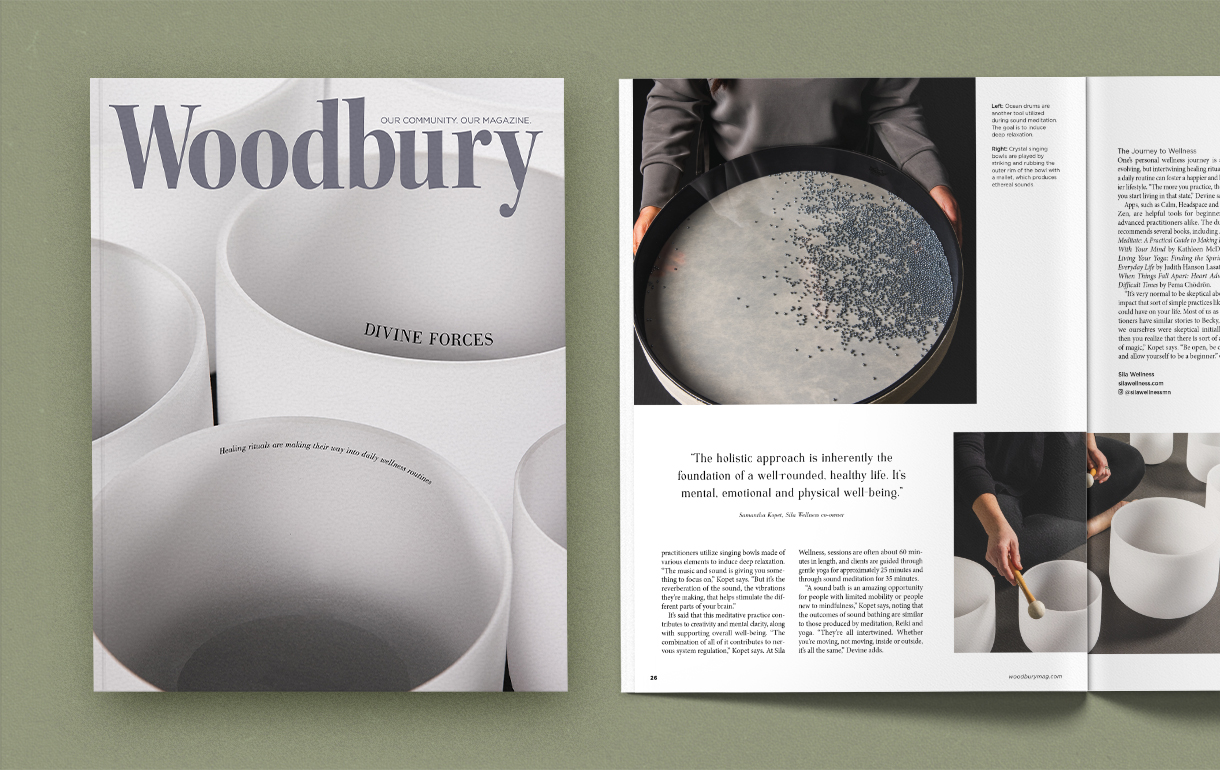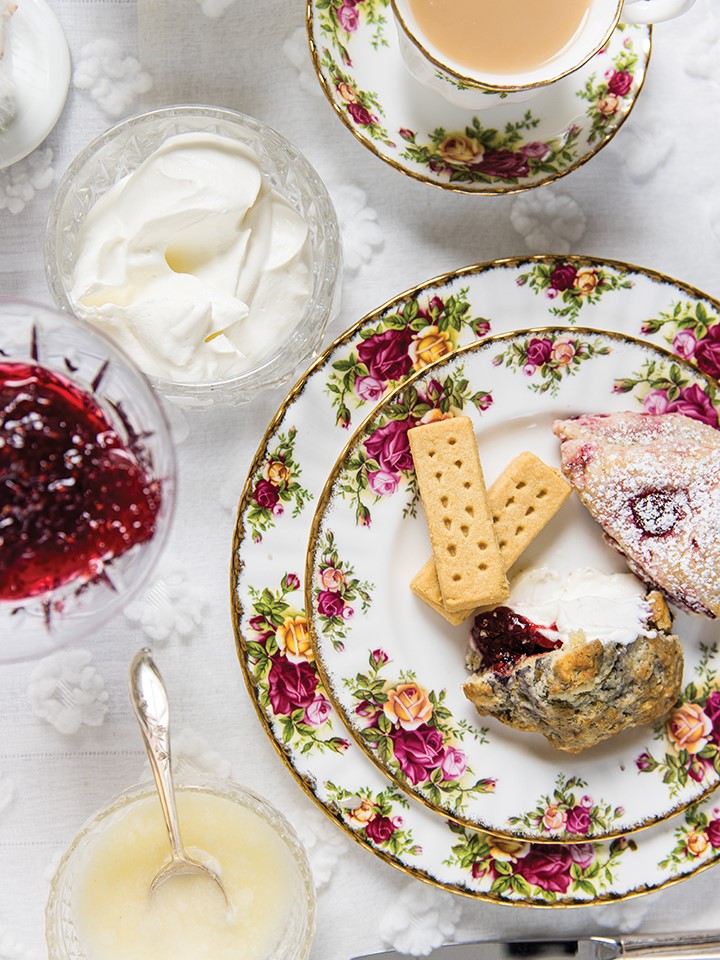
In old Ireland, “taking of the tea and scone” encourages you to enjoy your time. Photos: Chris Emeott
Local resident and Irish transplant Margaret Wachholz shares some traditional Irish recipes along with the history behind them.
There is nothing better for warming you up on a cold day than a cup of Irish Coffee and a slice of warm Irish Soda Bread with lashings of butter. The Soda Bread or Brown Bread also goes well with a glass of porter. At no other time of the year is Irish whiskey, Guinness and Harp more sought after than the weeks leading up to St. Patrick’s Day—a time for celebrating the spirit of the ancestors, not to mention the “spirits” of the Irish.
Irish Coffee
An Irish chef, Joe Sheridan, created the now famous Irish Coffee in 1942. His restaurant was close to an airport in Limerick. Due to notoriously bad weather along the West Coast of Ireland, flights to Newfoundland and America were often forced to return to Limerick for overnight stays. Sheridan was tasked with presenting a positive image of Ireland while American VIPs came to eat and drink. Sheridan decided to prepare something special to warm passengers up—they were often cold and hungry. His customers were warmed and intrigued with the dark coffee, Irish whiskey, a little brown sugar and the floating whipped cream on top of each cup. Perhaps this will help you remember the ingredients:
- Cream: Rich as an Irish brogue
- Coffee: Strong as a friendly hand
- Sugar: Sweet as the tongue of a rogue
- Whiskey: Smooth as the wit of the land
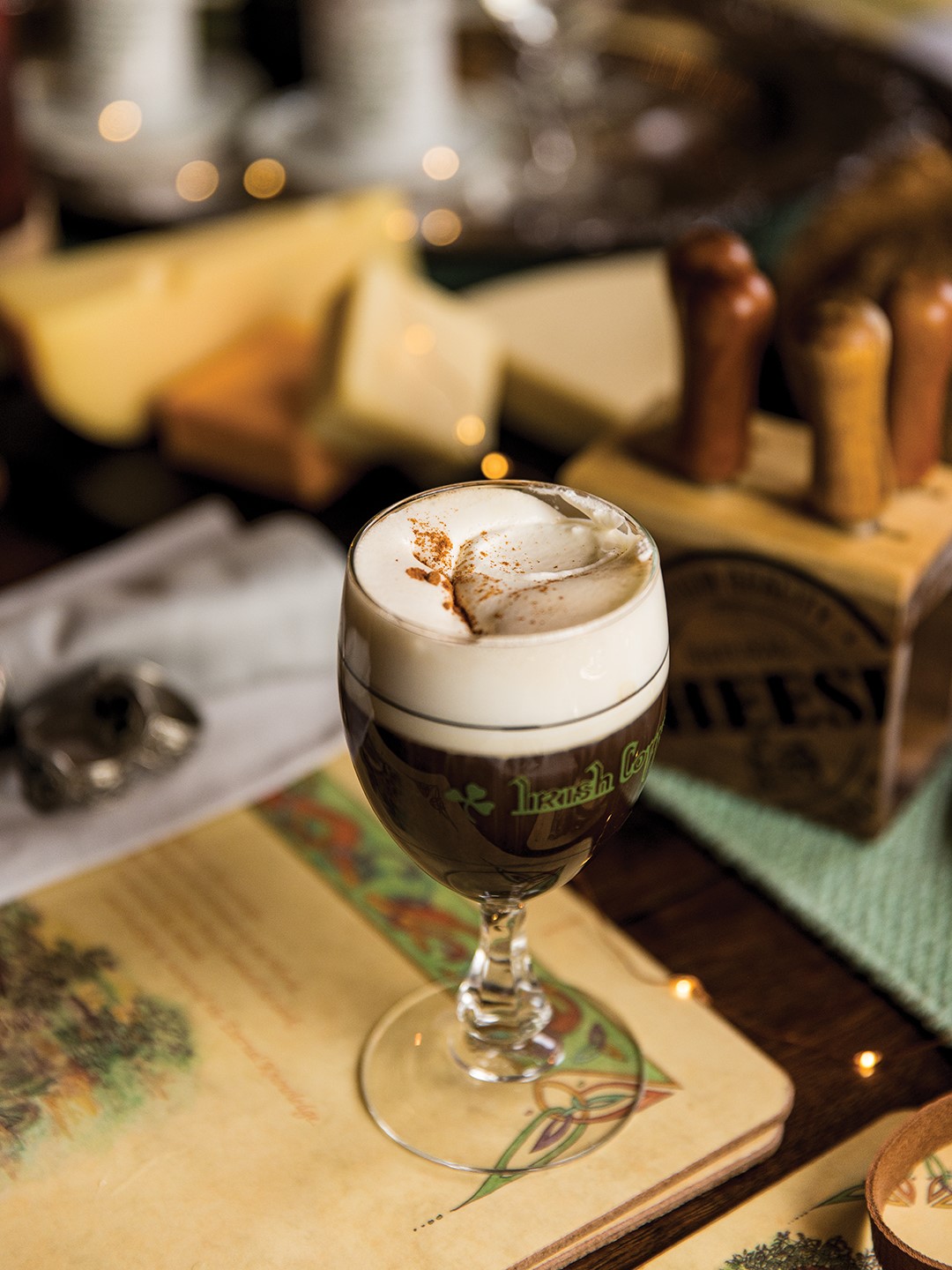
Irish Coffee, complete with Irish whiskey, is a staple in the culture.
Irish Coffee
Serves 1
- 1 bottle cap full of Powers or Jameson Irish Whiskey (the cap of the whiskey bottle)
- 4 oz. of strong freshly brewed dark roast coffee
- 2 tsp. brown sugar
- freshly ‘half whipped’ whipping cream
Preheat a clean stemmed glass with very hot water. Empty the water, and add the brown sugar. Now add coffee and whiskey. Stir well, then wait for the brew to still (to let the sugar dissolve well). Take a hot teaspoon and pour the lightly whipped fresh cream over the back of the spoon. The cream should be a “plopping consistency.”
Irish Soda Bread or Brown Bread
This bread is as likely to be eaten as an accompaniment to a main meal (to soak up the gravy) as it is to appear at breakfast and afternoon tea. Since the leavening agent is baking soda rather than yeast, you don’t need to wait for the dough to rise—which is ideal for busy lives and for children’s short attention spans.
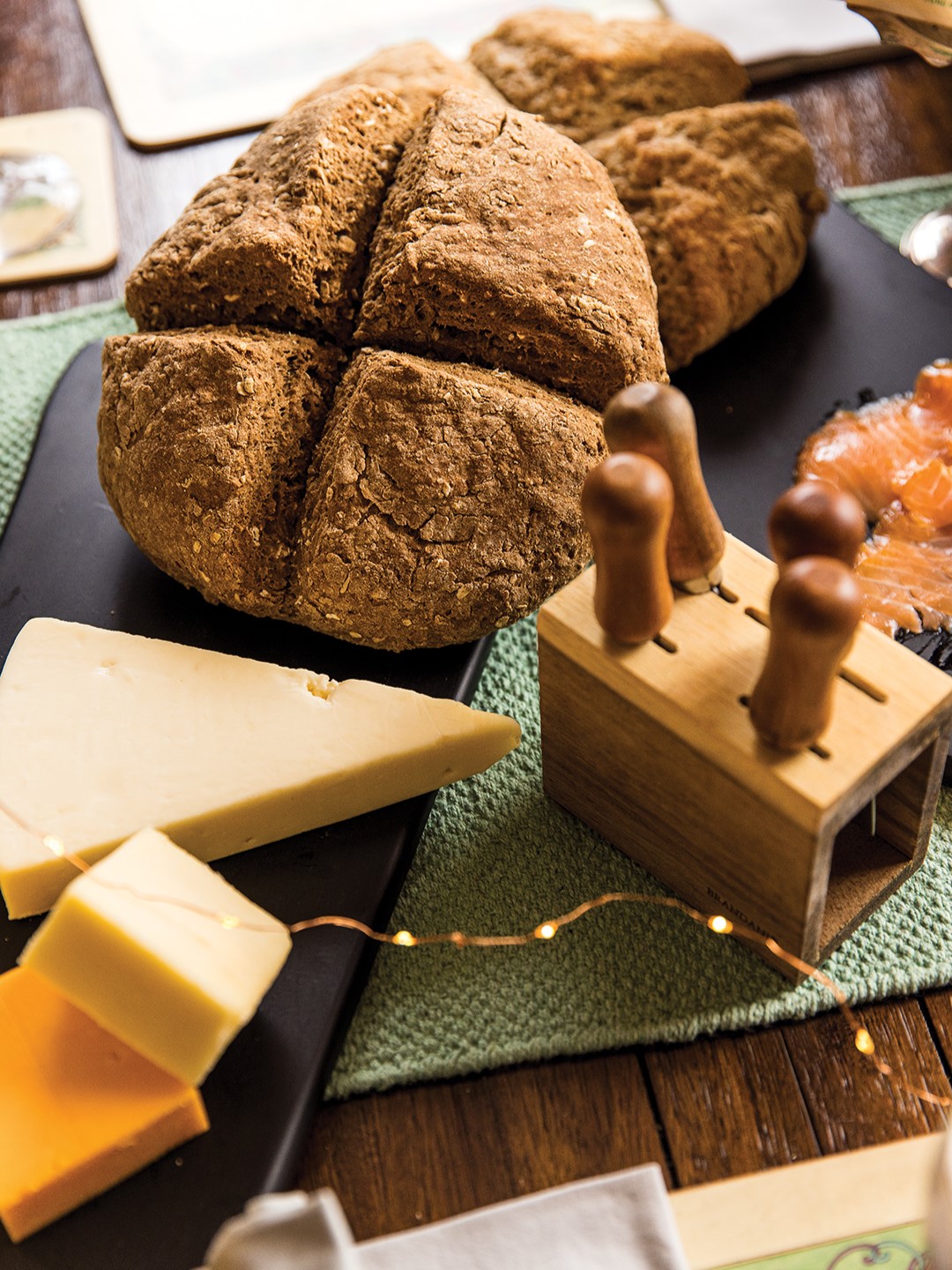
Irish Soda Bread appears at all hours of the day—breakfast, afternoon tea and an accompaniment at dinner.
Plain Irish Soda Bread or Brown Bread
Prepares one loaf
- 3 cups all-purpose flour, plus more for dusting
- 1/2 cup whole-wheat flour
- 1/2 cup unprocessed wheat bran
- 1 tsp. baking soda
- 1 tsp. baking powder
- 1 tsp. salt
- 1 2/3 cups buttermilk
Heat oven to 350 degrees F. Line a baking sheet with parchment paper. In a large bowl, whisk or stir together the flours, bran, salt, baking soda and baking powder until well combined. Make a well in the center and pour in the buttermilk all at once. Stir with a fork until the buttermilk is absorbed and the mixture begins to hold together. It should resemble a rough biscuit dough. Add additional buttermilk if too dry. Using your hands, form the dough into a round, dome-shaped loaf about 8-inches in diameter. Lift the loaf from the bowl and transfer to the prepared baking sheet. Dust the top of the loaf with flour. With a sharp knife, an adult should incise a cross, about 3/4 inches deep, into the top of the loaf. Transfer immediately to the oven. Bake 1 hour and 10 minutes (rotating pan halfway through baking time) or until bread is a deep golden brown and a skewer inserted in the center comes out clean. Remove from oven. Transfer to a wire rack to cool.
Colcannon
Colcannon is an adored part of Irish cuisine. It is a versatile creation. Colcannon has a wonderful affinity for corned beef and cabbage. It can be eaten with fillet mignon, pork or lamb chops with bacon and kidneys—at all hours of the day or night!
In some families at Halloween, the cook will hide lucky charms or coins in the mixture—these are said to bring the recipient’s good fortune. It is said that Sir Walter Raleigh planted Ireland’s first potato in Youghal, County Cork, in the 17th century. This has been disputed—Raleigh was already deceased when the planting was supposed to have happened. The other theory sees the potato arriving to Ireland by accident in 1588, crashing onto the western shore aboard a wrecked Spanish armada ship.
Regardless, by the 1700s, the potato was an integral part of meals for Ireland’s population. Colcannon, a side dish of mashed potatoes mixed with garden-grown kale or cabbage, had emerged as a staple food. The ingredients joined ancient and modern Ireland; the ancestral diet in the country was heavy on kale and cabbage, and colcannon combined them with the more modern potato to create something hearty and filling that would keep the workingman satiated for a decent stretch of time. This version uses cabbage and scallions (green onions), but you can use kale and leeks instead if you prefer.
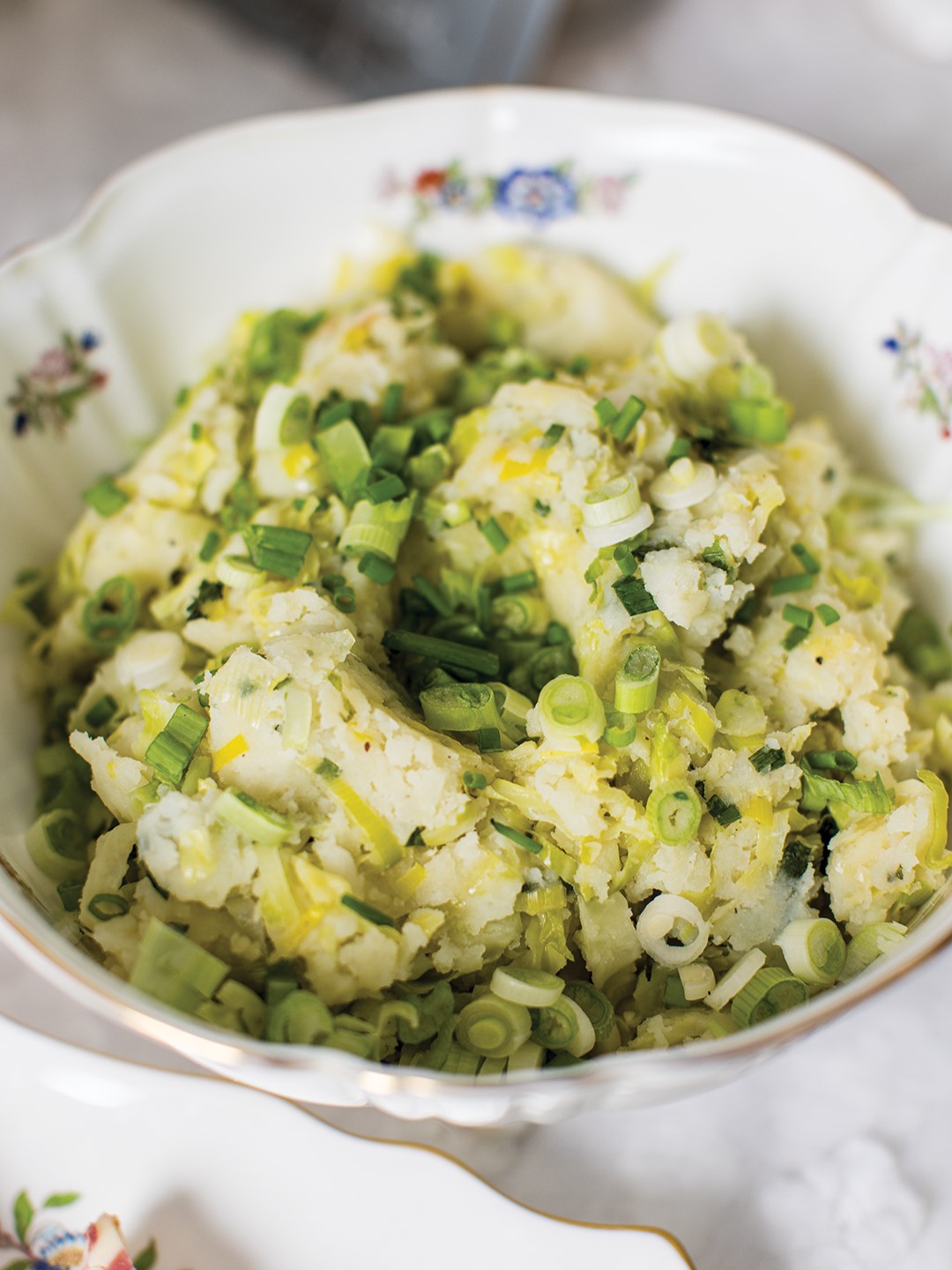
Colcannon
Colcannon
Serves 4
- 4 floury potatoes, such as russets or Yukon gold, cut into chunks
- 4 Tbsp. lightly salted butter
- 2/3 cup light cream
- 1/2 small green or white cabbage
- 6 scallions (or green onions), chopped
- salt and pepper, to taste
Cook the potatoes in a large saucepan of boiling salted water for 15–20 minutes. Drain well and mash with a potato masher until smooth. Season to taste with salt and pepper, add the butter and cream, and stir well. The mashed potatoes should be soft. Keep the potatoes warm while you cook the cabbage. Cut the cabbage into quarters, remove the tough core in the middle, and shred the leaves finely. Cook the cabbage in a large saucepan of boiling salted water for 1–2 minutes, until soft. Drain thoroughly. Mix the potato and cabbage together and stir in the scallions. Season well with salt and pepper.
The Taking of the Tea and Scone
In Irish Cuisine: A dollop of freshly whipped cream is the traditional partner for scones as well as the smearing of raspberry jam. Cut a piece of scone with a knife and smear jam and cream onto each piece before taking a bite.
The Tea: A cup of Lyons or Barry’s Tea with whole milk and sugar (to round the flavor) adds to the event of the “taking of tea and a scone” in the old country. It forces you to simply slow down and enjoy the moments.
Raspberry or Blueberry Scones
- 2 ½ cups all-purpose flour, plus more for dusting your work surface
- ¼ cup sugar, plus 1 Tbsp. sugar for dusting
- ½ cup cold butter, cut into small pieces (If you can, purchase Kerrygold or any European butter.)
- 1 Tbsp. baking powder
- ¾ tsp. salt
- 1 cup buttermilk
- 1 large egg yolk
- 1 ½ cups frozen raspberries or blueberries (Fresh raspberries contain too much juice for this recipe, making a too-wet sticky dough. Fresh blueberries are tougher and don’t disintegrate in the dough.)
Preheat overn to 400 degrees F. In a food processor, pulse together flour, sugar, baking powder and salt. Add the cut-up butter and pulse until pea-size pieces form. (If you don’t have a food processor, cut the cubed butter into the dry ingredients with a fork or pastry cutter in a large bowl.) Slowly pour buttermilk mixture through feed tube into processor, pulsing until dough just comes together. Or, make a well in the center of the dry ingredients in your bowl and pour in buttermilk and mix with a fork using a light hand. Add the frozen raspberries and blueberries, and fold into the mixture gently. Transfer dough to a lightly floured work surface and knead the dough. For light and crumbly scones, it’s best to knead the dough until it just comes together. It’s okay if the dough is still crumbly. Overmixing the dough can yield chewy and tough scones. Pat dough into an approximately 5-inch round shape, and approximately 1.5 inches in thickness. Cut the disc into 6 wedges and place slightly separate on a baking sheet. Brush with buttermilk with a pastry brush. Sprinkle tops with I tablespoon of sugar for a flaky crust. Put sheet pan of scones into the refrigerator for 15 minutes before baking. (Cold ingredients make for a better scone). Bake until golden brown, for 25– 30 minutes, rotating the sheet pan halfway through. Let scones cool slightly for 10 minutes on sheet and then transfer to wire racks. Serve warm, at room temperature or cold.
Lemon Butter Glaze
- 1/4 cup fresh Lemon Juice
- 1 cup Confectioner’s Sugar
- ½ Tbsp. butter, melted
Combine all ingredients in a small bowl. Whisk until the lumps disappear. Once the scones have cooled, drizzle each scone with glaze.





